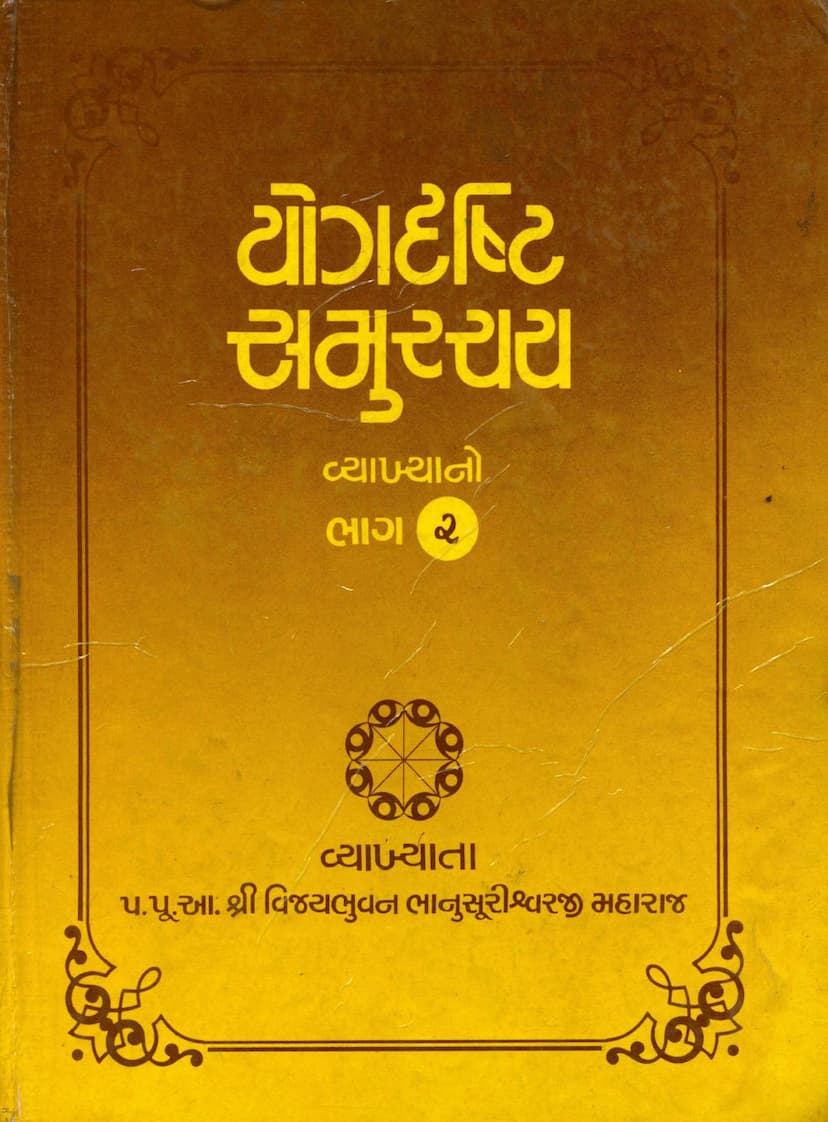Yogdrushti Samucchay Part 02
Added to library: September 2, 2025

Summary
This document is the second part of the Gujarati commentary on the Jain text "Yogdrushti Samucchay" (Collection of Yogic Views) by Acharya Purandar Shrimad Hemchandrasuri Maharaj, with commentary by Acharya Shri Vijay Bhuvanbhanusuri Maharaj.
Here's a breakdown of the content:
Key Information about the Book:
- Title: Yogdrushti Samucchay Part 02 (Collection of Yogic Views Part 02)
- Original Author: Acharya Purandar Shrimad Hemchandrasuri Maharaj
- Commentator/Lecturer: Acharya Shri Vijay Bhuvanbhanusuri Maharaj
- Publisher: Divyadarshan Trust
- Editors/Transcribers: Muni Shri Kalparatan Vijayji M. and Pu. Muniraj Shri Paddhasen Vijay Maharaj
- First Edition: V.S. 2042 / V.S. 2512
- Price: Rs. 30-00
- Sponsors/Financial Supporters: Shri Heersurishwar Jagadguru Mo. Tapagachh Jain Sangh Trust Malad (East) Mumbai; Shri Sahasraphana Parshvanath Jain Shvet. Derasar Upashray Trust Mumbai; Babulnath Gyan Khata.
- Availability: Kumarpal V. Shah, Bharatkumar Chaturdas.
Content Summary of Part 02:
This second part of the commentary focuses on three specific "Yogdrushti" (yogic perspectives or viewpoints) out of the eight mentioned in the original text:
-
Mitra Drishti (Friendly View): This section discusses how in the initial stages of spiritual practice (Mitra Drishti), the understanding of truth is like the faint glow of grass-fire. It emphasizes the avoidance of the defect called "khed" (grief/discouragement) and the development of the quality of "adrosh" (non-aggression/lack of hatred). This stage involves practices like Jin-bhakti (devotion to Jinas), guru-seva (service to the preceptor), adherence to vows (dravyabhrigraha), and scriptural study. It is described as the manifestation of the first spiritual stage (Guṇasthān).
-
Tara Drishti (Star View): This perspective is compared to the glow of cow-dung fire. It involves the realization of "niyam" (discipline) and the avoidance of the defect "udveg" (agitation/restlessness). The quality of "jijñāsa" (curiosity/desire to know) awakens, leading to other virtuous qualities like love and respect for yoga, fear of worldly existence, and adherence to propriety. A key realization here is the recognition of one's own limited intellect and the need to follow the guidance of wise individuals.
-
Bala Drishti (Strength View): This stage is likened to the glow of wood-fire. It involves the realization of "Aasan" (posture/steadfastness) and the avoidance of the defect "kshep" (neglect/carelessness). It leads to the attainment of the quality of "shushrusa" (diligent service), where the mind yearns to listen to profound scriptural discourse, leading to a deeper understanding of truth.
The introductory section (Prakathan) highlights the benevolent nature of Lord Jineshwara's teachings and how Acharya Haribhadra Suri Maharaj, upon realizing the truth of Jainism, experienced liberation from one-sided views. It emphasizes the importance of understanding the Jain philosophy of "anekantavada" (many-sidedness) and how this text provides guidance for yogic practice. The text aims to free individuals from the delusion of one-sided perspectives and aids in yogic endeavors.
The summary also touches upon the practical impact of Acharya Bhuvanbhanusuri Maharaj's discourses, noting how they have inspired individuals from childhood to adulthood towards spiritual growth, helping many shed worldly attachments and embrace a life of dharma. It stresses that dharma, residing in practices like Jin-bhakti, Samayika, and Pratikramana, is the essence of human life and the path to both material and spiritual well-being. The text advocates for abandoning sinful activities and increasing devotion and righteous conduct, supported by proper knowledge.
The document also includes a detailed index (Anukramanika) listing the various topics covered, along with their corresponding page numbers. These topics range from the importance of spiritual insight, the causes of worldly suffering, the nature of different yogic states, the significance of vows and virtues, to the practical aspects of devotion and self-discipline.
Overall Tone and Purpose:
The commentary is highly encouraging and philosophical, aiming to guide the reader towards spiritual upliftment and liberation by understanding the intricacies of yogic practices within the Jain framework. It emphasizes the transformative power of right perspective, diligent practice, and unwavering devotion.